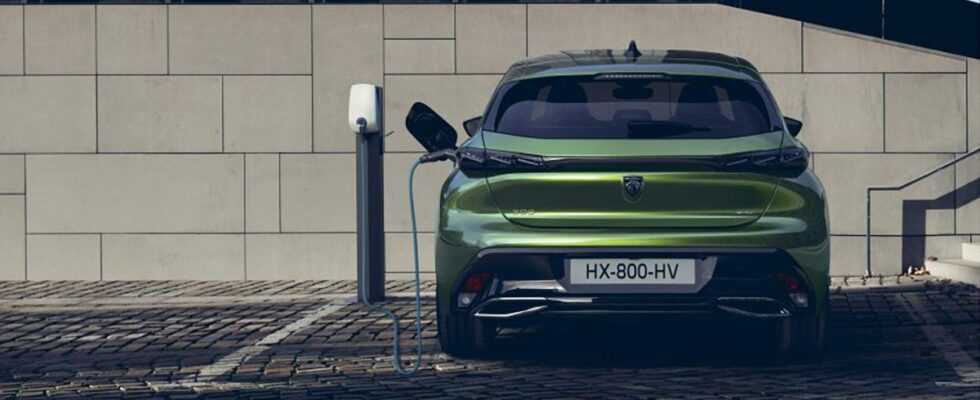2
Announced late when the whole range was already known, the e-308 will finally hit the roads in the fall of 2023. The powertrain comes from the e-208 and promises 400 km of autonomy.
According to PSA’s initial strategy, city cars and other urban SUVs (208 and 2008) must convert to electric when cars in the upper segments must carry plug-in hybrid engines. A relevant posture, which responds to well-defined use cases. But the rapid acceleration of so-called “zero emission” policies is pushing electric power out of towns and leading to sometimes unexpected reactions from builders.
Thus, the Peugeot 308, unveiled last year and whose range plan was clear with petrol, diesel and plug-in hybrid engines, is now enriched with an electric engine. This will be available on the roads from the fall of 2023. Half good news, because if this announcement can delight those who are waiting for a Peugeot e-308 duel versus Renault Mégane E-TECH, the confrontation is likely to be cut short, to the advantage of the Mégane. If a test of each of the versions will allow us to judge the intrinsic qualities of the two vehicles, the e-308 will immediately show a delay with an EMP2 V3 architecture, which is not designed for a 100% electric motorization. Peugeot engineers would nevertheless have succeeded in housing the battery by optimizing the space under the seats. In a tight space, the e-308 will house the e-208 battery reworked in its NMC chemistry to deliver higher energy density that boosts capacity to 54 kWh.
The electric motor meanwhile increases from 100 kW to 114 kW (156 hp) and the maximum torque is supposed to increase by 10 Nm to reach 270 Nm. The powertrain, together with aerodynamic modifications and the new heat pump recently introduced in e-CMP models, would be more efficient. Consumption is still estimated at 12.4 kWh/100 km, which makes possible a WLTP range of almost 400 km. The Peugeot e-308 will nevertheless be able to count on its SW version and an 11 kW on-board charger as standard. Charging from 10 to 80% in DC is however limited to 100 kW for a time of 30 min. These figures, sufficient for daily use, may penalize the e-308 on long journeys. Large riders will therefore have to wait for the next e-3008, which will be a priori the first of the group to release a set of chassis, batteries and dedicated motors on the future eVMP platform.

